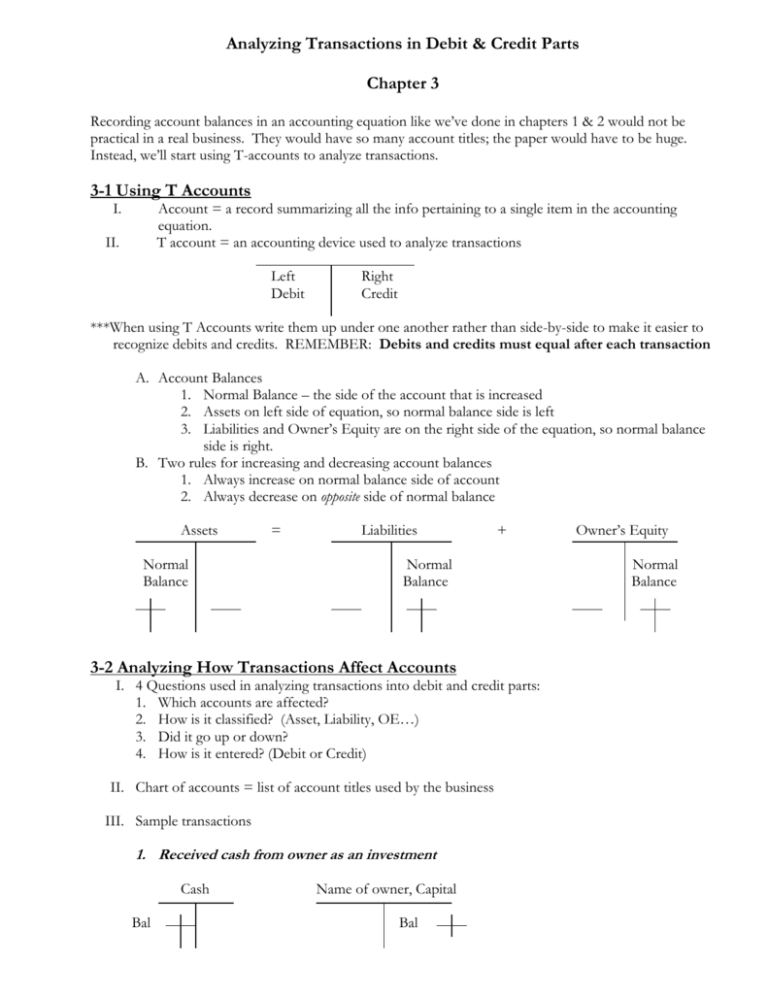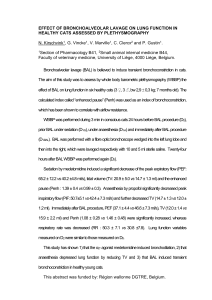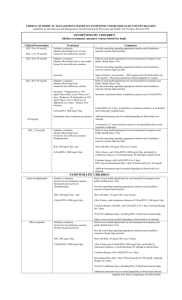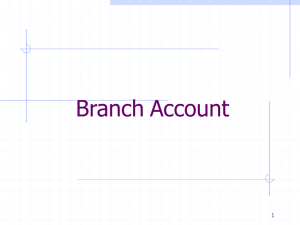Analyzing Transactions: Debits & Credits in Accounting
advertisement

Analyzing Transactions in Debit & Credit Parts Chapter 3 Recording account balances in an accounting equation like we’ve done in chapters 1 & 2 would not be practical in a real business. They would have so many account titles; the paper would have to be huge. Instead, we’ll start using T-accounts to analyze transactions. 3-1 Using T Accounts I. Account = a record summarizing all the info pertaining to a single item in the accounting equation. T account = an accounting device used to analyze transactions II. Left Debit Right Credit ***When using T Accounts write them up under one another rather than side-by-side to make it easier to recognize debits and credits. REMEMBER: Debits and credits must equal after each transaction A. Account Balances 1. Normal Balance – the side of the account that is increased 2. Assets on left side of equation, so normal balance side is left 3. Liabilities and Owner’s Equity are on the right side of the equation, so normal balance side is right. B. Two rules for increasing and decreasing account balances 1. Always increase on normal balance side of account 2. Always decrease on opposite side of normal balance Assets Normal Balance = Liabilities + Normal Balance 3-2 Analyzing How Transactions Affect Accounts I. 4 Questions used in analyzing transactions into debit and credit parts: 1. Which accounts are affected? 2. How is it classified? (Asset, Liability, OE…) 3. Did it go up or down? 4. How is it entered? (Debit or Credit) II. Chart of accounts = list of account titles used by the business III. Sample transactions 1. Received cash from owner as an investment Cash Bal Name of owner, Capital Bal Owner’s Equity Normal Balance 2. Paid cash for supplies Cash Supplies Bal Bal 3. Paid cash for insurance Cash Prepaid Insurance Bal Bal 4. Bought supplies on account from So and So Supplies Accounts Payable – So and So Bal Bal 5. Paid cash on account to So and So Cash Accounts Payable – So and So Bal Bal 3-3 Analyzing How Transactions Affect Owner’s Equity Accounts I. Sales A. Sales now has its own account because: 1. To avoid having too many entries in Capital and 2. To summarize revenue info separately B. Since Revenues increase OE, then the balance side for revenues will be on the credit (same side that increases OE) III. Sample transactions 6. Received cash from sales Cash Bal Sales (Revenue) Bal 7. Sold services on account Accounts Receivable- So and Sales Bal Bal I. Expenses A. Expenses now has their own accounts too because: 1. To avoid having too many entries in Capital and 2. To summarize expense info separately B. Since Expenses decrease OE, then the balance side for expenses will be on the debit (same side that decreases OE) Owner’s Equity Bal 8. Paid Cash for an Expense (rent, utilities, advertising, etc) Cash ? Expense Bal Bal The amount it is costing us for rent just increased. 9. Received cash on account Cash Bal Accounts Receivable – So and So Bal I. Withdrawals A. Withdrawals are now recorded in its own account, Drawing, too because: 1. To avoid having too many entries in Capital and 2. To summarize withdrawal info separately Since Withdrawals decrease OE, then the balance side for withdrawals will be on the debit (same side that decreases OE) Owner’s Equity Bal 10. Paid cash to owner for personal use Cash Bal Name of owner, Drawing Bal










